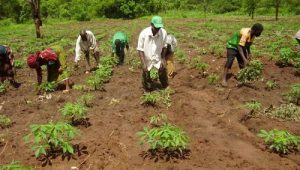The African Development Bank’s 2019-2023 strategy for Ghana is producing tangible results, particularly in the agriculture and transport sectors, according to a mid-term review of the strategy.
The strategy, which was approved by the Board of Executive Directors of the African Development Bank Group in June 2019, is based on two pillars: support for Ghana’s industrialization and private-sector development activities, and support for infrastructure development that enables domestic, regional and global trade.
According to the mid-term review of the Country Strategy Paper, which was approved on 11 January 2022, the Bank’s various operations in the agriculture sector have helped to improve productivity, expand output, leverage private investment and de-risk agricultural lending.
The Bank’s Technologies for Accelerated Agricultural Transformation (TAAT) interventions are improving the productivity of selected commodities and expanding production areas, especially in the Northern Savannah agro-ecological zone. These interventions increased maize yields by 132% and soybean yields by 25% in 2020. Moreover, under the Ghana Incentive-based Risk Sharing System for Agricultural Lending, 15 financial institutions have granted $31 million in loans and $14.5 million in credit risk guarantees, thus contributing to improvements in agricultural productivity and farmers’ incomes.
The Rural Enterprises Project, implemented as part of the Ghana CSP 2019-2023, is improving the livelihoods of rural micro and small-scale entrepreneurs by improving access to business development services. “By mid-term of the strategy, the project has created 74,677 waged jobs (75% of target), and 37 business resource centres and 30 technology solution centres across the country are supporting youth entrepreneurs and improving livelihoods for rural communities,” the review states.
In terms of transport, the Accra Urban Transport Project has been completed. Among other things, a four-tier interchange has been built to promote the efficient movement of goods and people, boost trade, enhance income generation and improve the livelihoods of users. In particular, the project has helped to reduce vehicle operating costs by 37%, cut travel time from two hours to 30 minutes and lower road accident rates by 40%.
The project also provided protection for the Gua Sacred Forest, which reduces CO2 emissions, and provided 14 primary schools with fully equipped, modern ICT labs. These provide access to bespoke ICT training for over 12,000 primary school children, more than 50% of whom are girls.
The project has also enabled two women’s groups to renovate their facilities and get ICT support to improve the quality of their businesses, increasing the annual average income of over 500 women by 10%.





